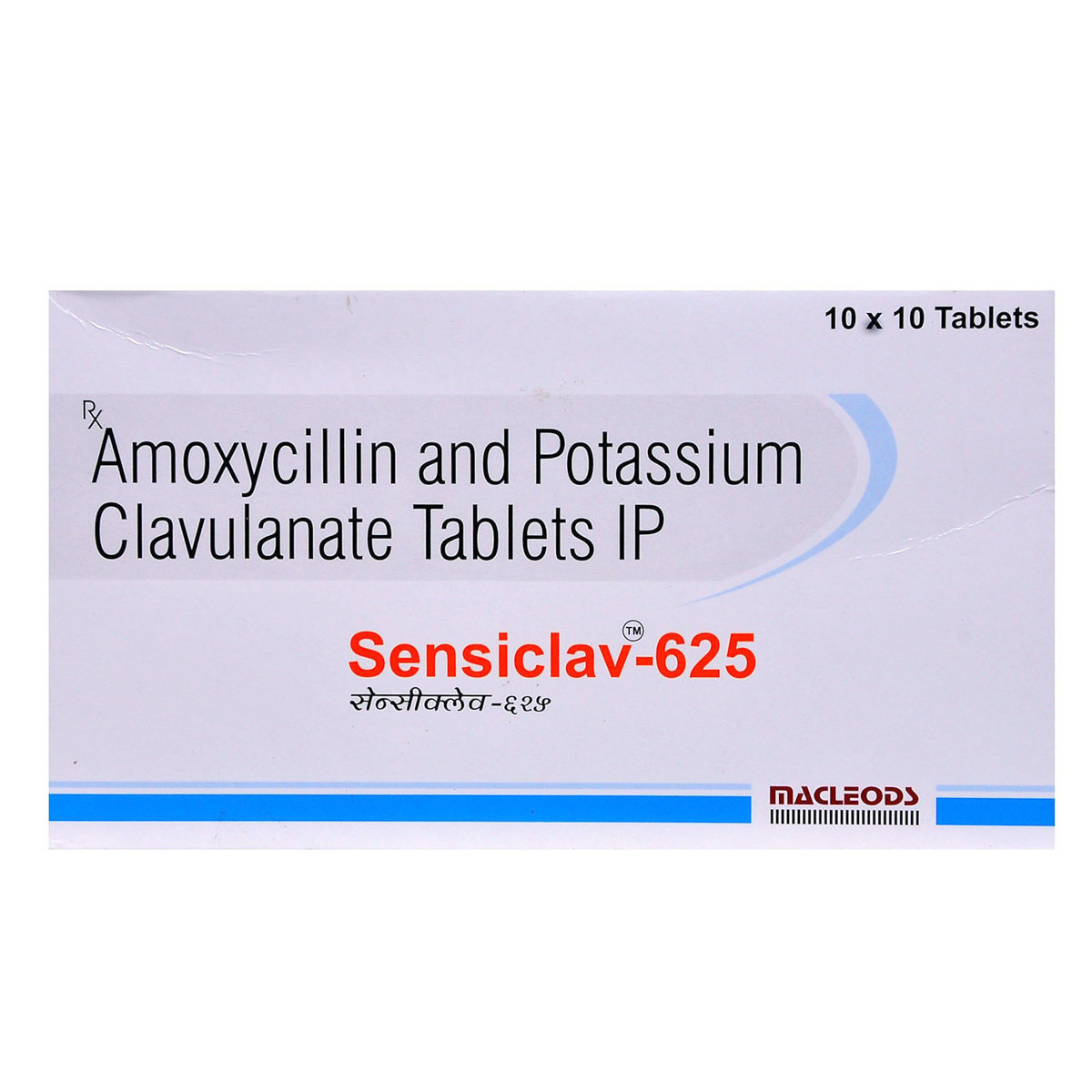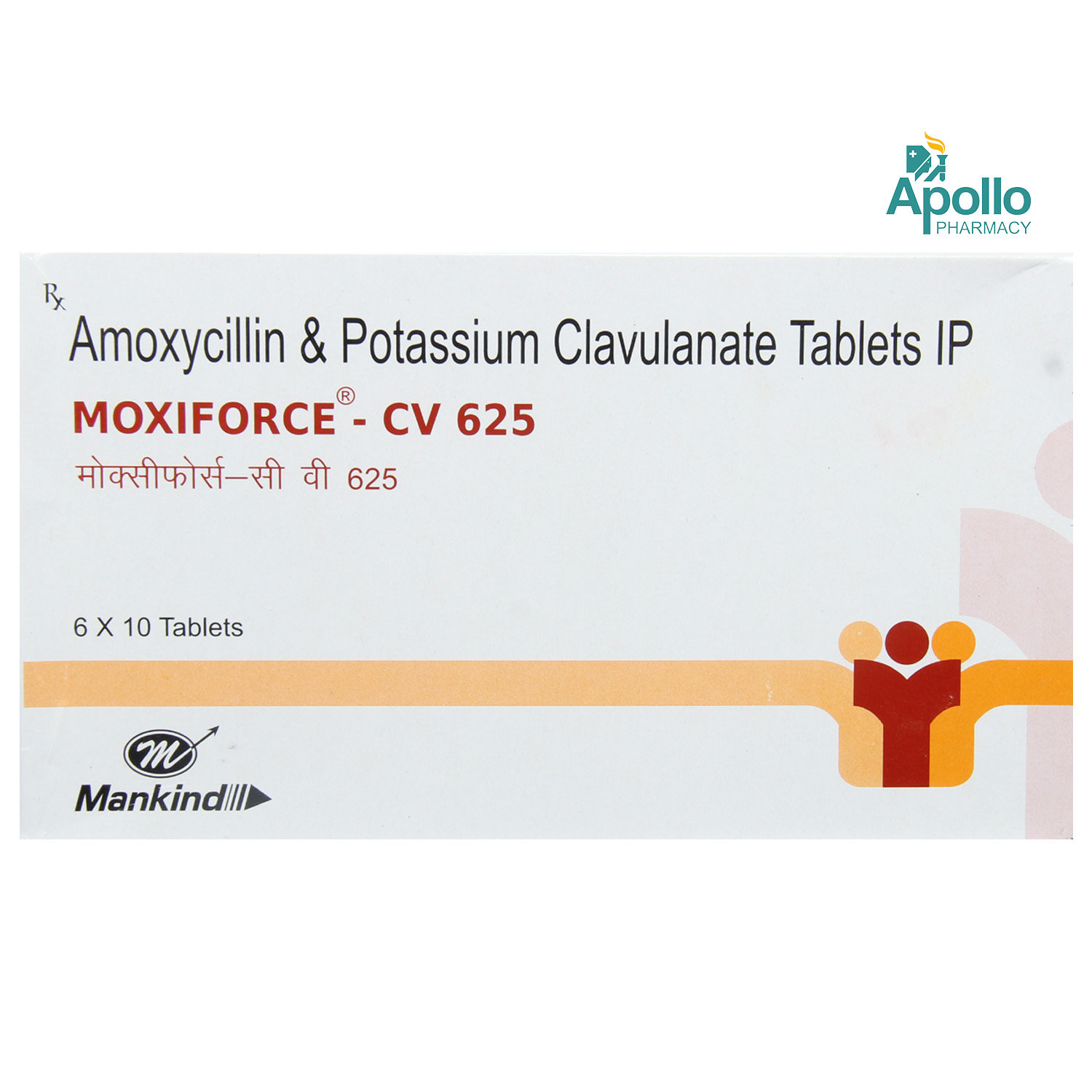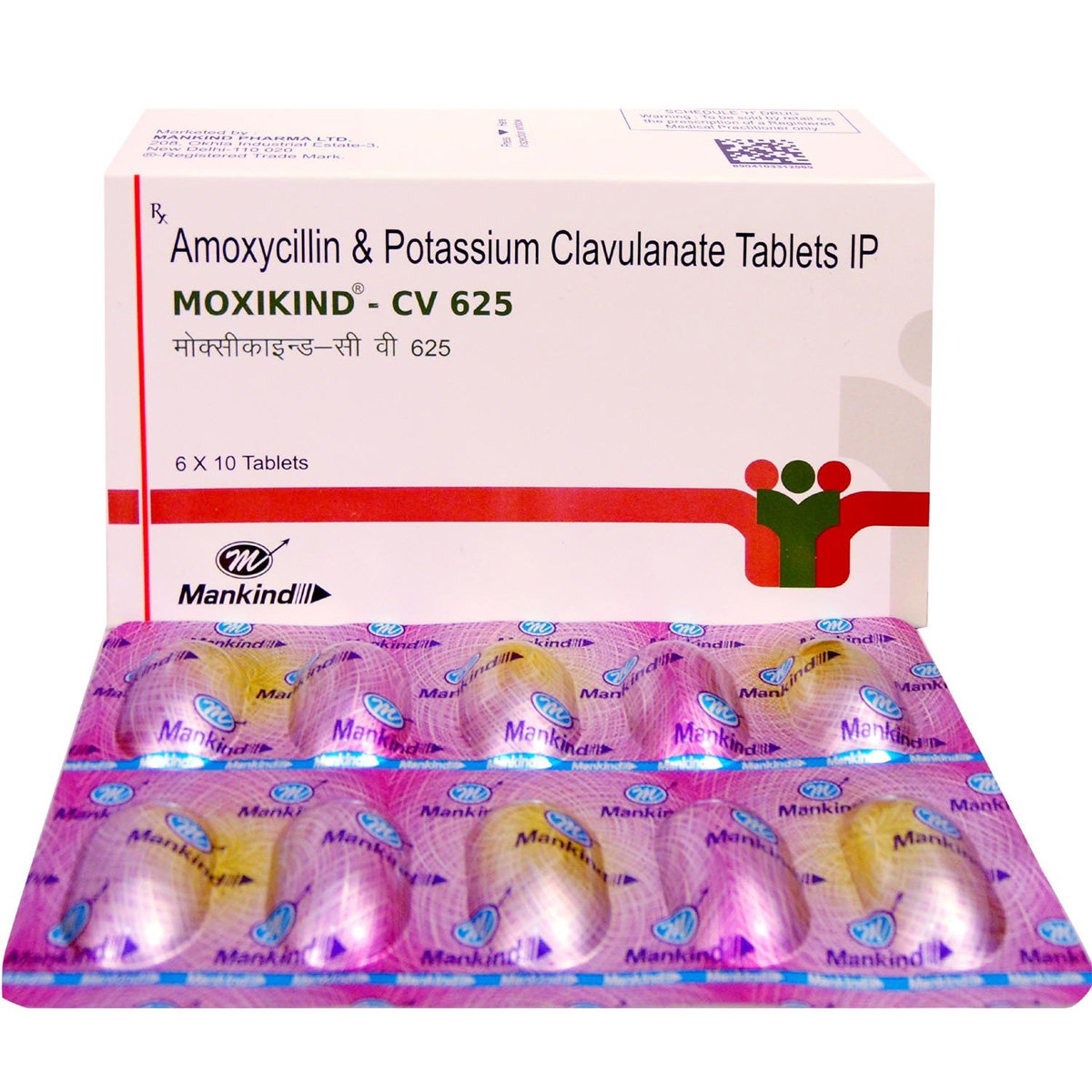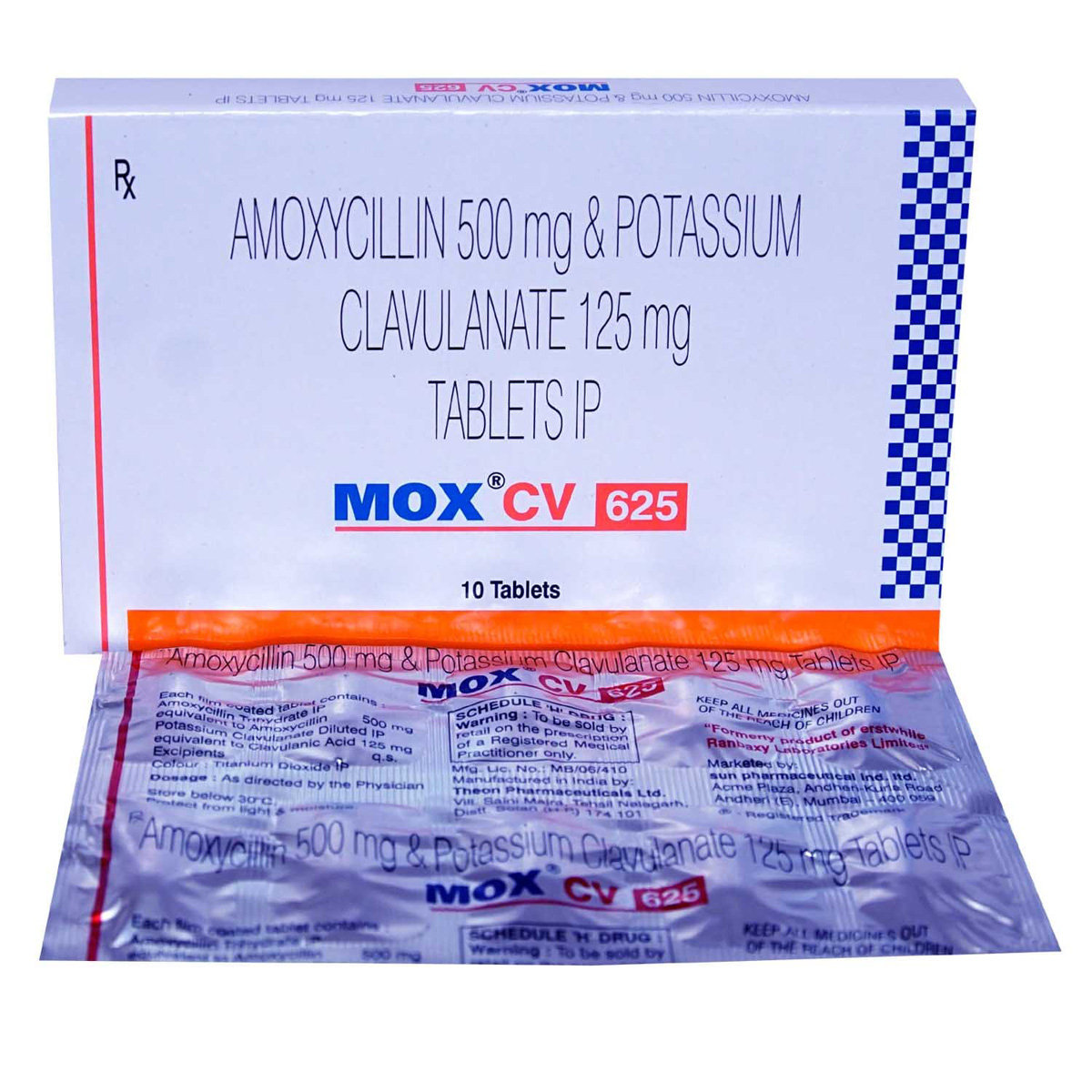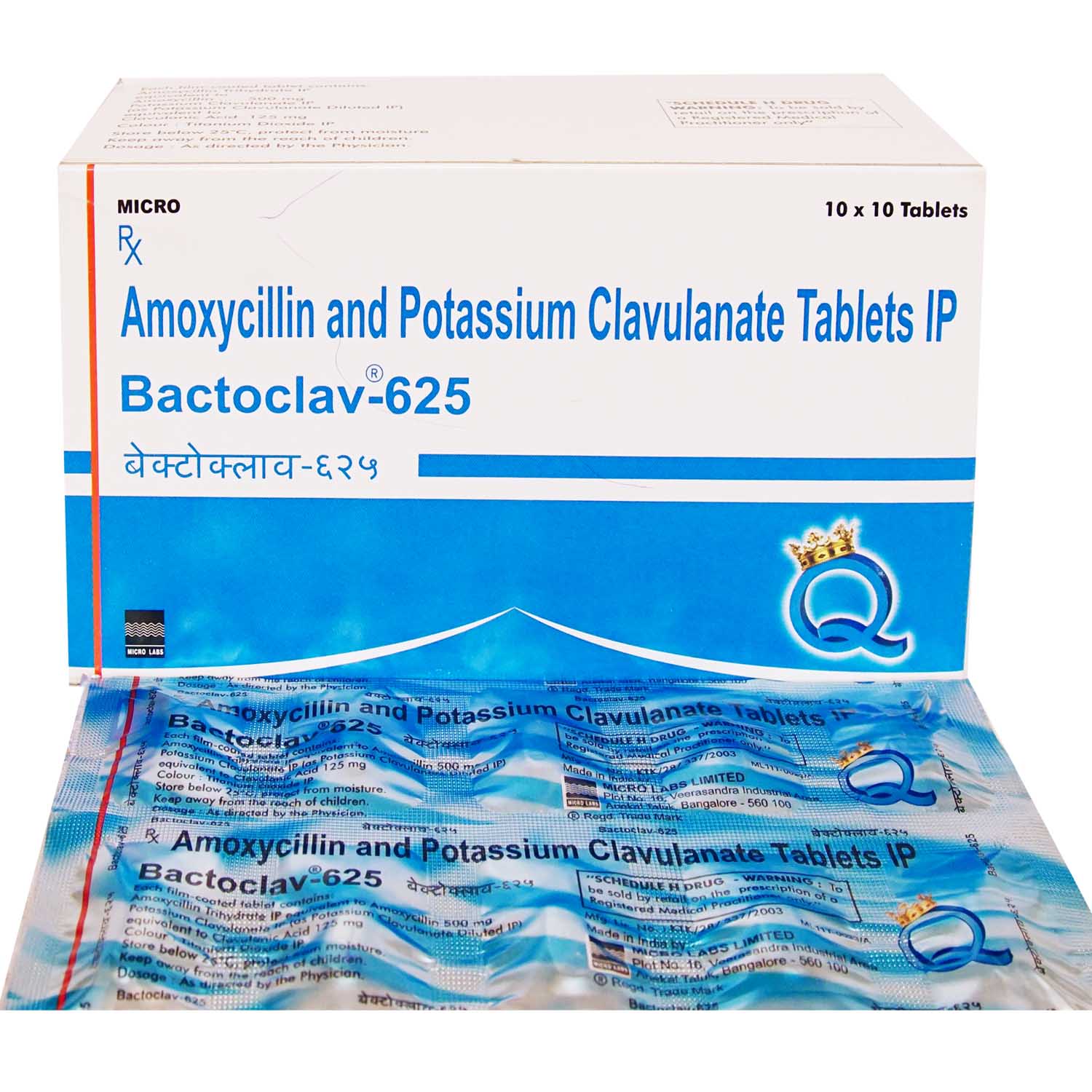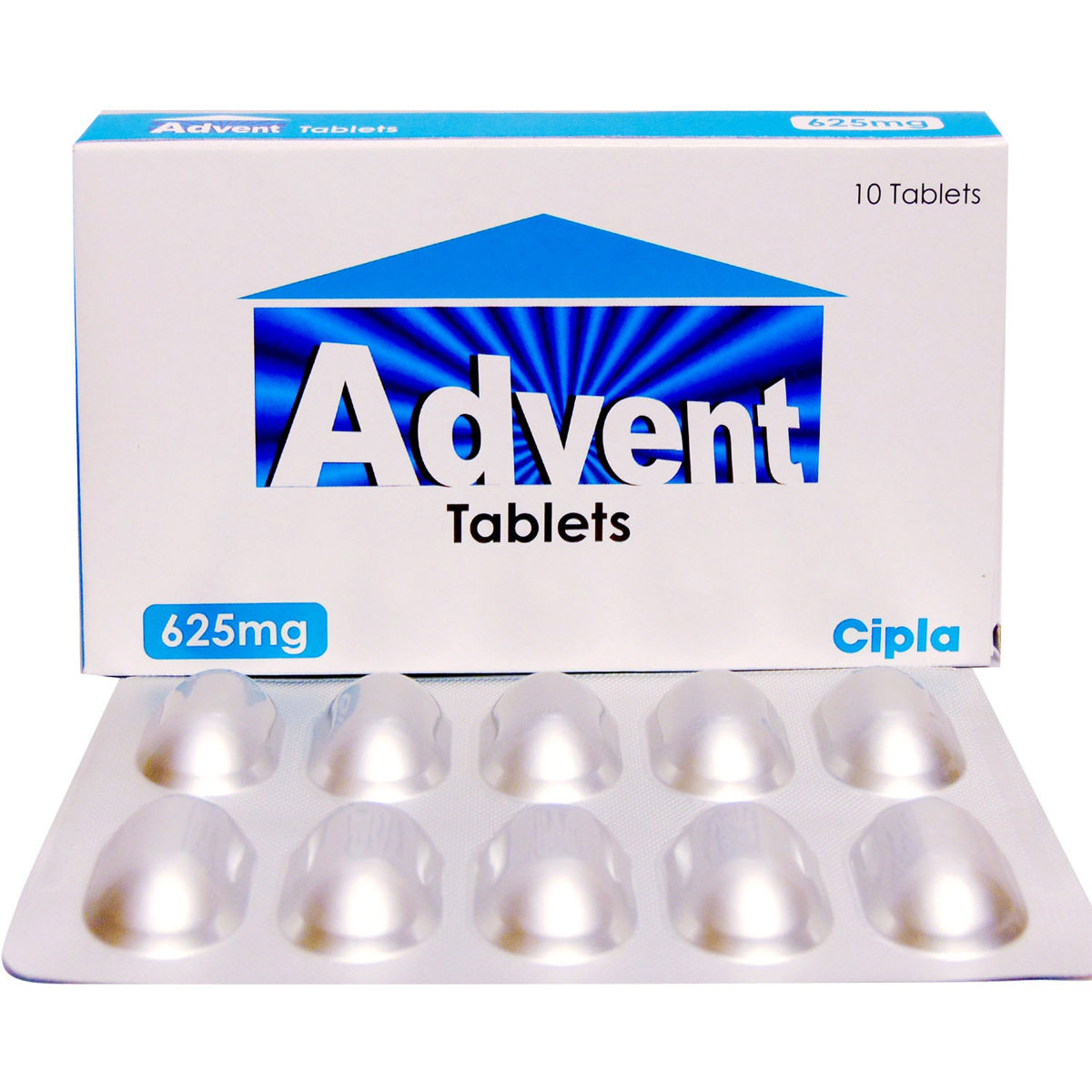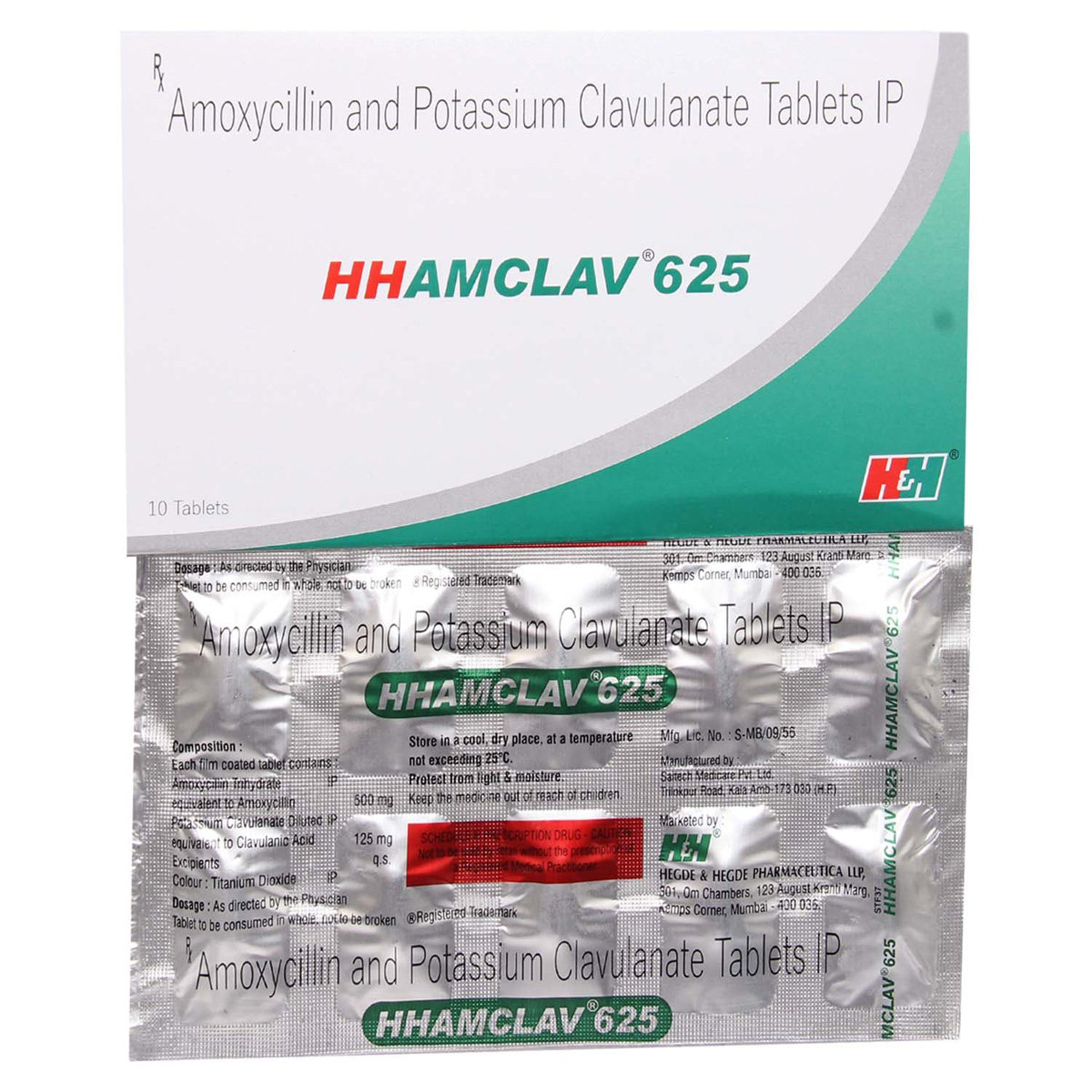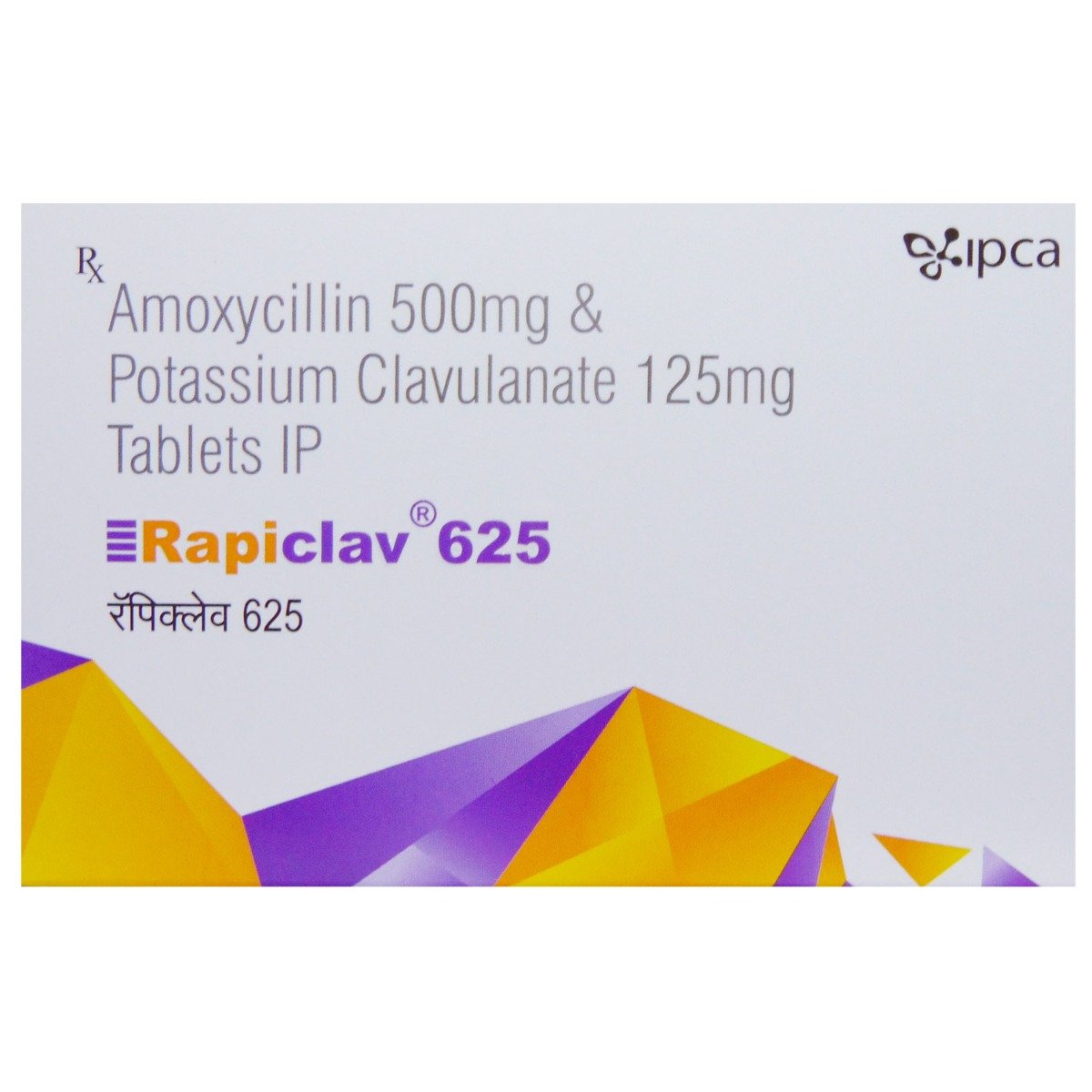Clavdose CV 625 Tablet


MRP ₹118
(Inclusive of all Taxes)
₹17.7 Cashback (15%)
Provide Delivery Location
Online payment accepted
 Prescription drug
Prescription drugWhats That
Composition :
Manufacturer/Marketer :
Consume Type :
Return Policy :
About Clavdose CV 625 Tablet
Clavdose CV 625 Tablet belongs to a group of antibiotics known as penicillin antibiotics. It is generally prescribed to prevent middle ear and sinus infections, throat or lung respiratory tract infections, urinary tract infections, skin infections, soft tissue infections, dental infections, and joint and bone infections.
Clavdose CV 625 Tablet consists of two medicines: Amoxycillin and Clavulanic acid. Amoxycillin acts by destroying the outer protein layer, thereby killing the bacteria (bactericidal action). Clavulanic acid inhibits the enzyme beta-lactamase, which prevents bacteria from destroying the efficacy of amoxycillin. As a result, the action of Clavulanic acid allows Amoxycillin to work better and kill the bacteria. Clavdose CV 625 Tablet does not work against infections caused by viruses, including colds and flu.
The dose of Clavdose CV 625 Tablet can vary depending on your condition and the severity of the infection. Also, it is recommended to complete the course of medicine even if you feel better as it is an antibiotic, and leaving it in between may lead to even severe infection that will, in fact, stop responding to the antibiotic as well (antibiotic resistance). The common side effects of Clavdose CV 625 Tablet include vomiting, nausea, and diarrhoea. Everyone may not experience the above side effects. In case of any discomfort, speak with a doctor.
Before starting Clavdose CV 625 Tablet, please inform your doctor if you have any allergy (against any antibiotic) or kidney or liver problems. Do not take Clavdose CV 625 Tablet on your own as self-medication since it may lead to antibiotic resistance in which antibiotics fail to act against specific bacterial infections. Clavdose CV 625 Tablet is safe for children if prescribed by a doctor; the dose and duration may vary depending on the child’s weight and the severity of the infection. Inform your doctor about all the medicines you are taking and about your health condition to rule out any unpleasant side effects.
Uses of Clavdose CV 625 Tablet
Directions for Use
Medicinal Benefits
Clavdose CV 625 Tablet is a broad-spectrum antibiotic that covers a very wide range of bacterial infections. Clavdose CV 625 Tablet has Clavulanic acid, which protects amoxycillin from getting destroyed by the bacterial enzyme, thus increasing its efficacy. Besides this, it helps overcome antibiotic resistance in bacteria that is caused by the enzyme beta-lactamase. This makes the drug effective in multiple infections like ear infections (acute otitis media), bronchitis, pneumonia, urinary tract infections, skin infections, etc.
Storage
- Consult your doctor if you experience skin redness, itching, or irritation after taking medication.
- Your doctor may adjust your treatment plan by changing your medication or providing guidance on managing your erythema symptoms.
- Your doctor may recommend or prescribe certain medications to help alleviate symptoms.
- Apply cool compresses or calamine lotion to the affected skin area to reduce redness and itching.
- Stay hydrated by drinking plenty of water to help alleviate symptoms and keep your skin hydrated.
- Monitor your skin condition closely and promptly report any changes, worsening symptoms, or concerns to your healthcare provider.
- If you experience symptoms like itching, burning, redness, or discharge after taking medication, consult your doctor immediately and share your symptoms, medication regimen, and medical history.
- Your doctor will assess your medication regimen to determine if it's contributing to the moniliasis and identify the best course of action to manage your condition.
- Your doctor may prescribe antifungal medications or recommend other treatments to help clear up the infection. They may also suggest self-care measures to help manage symptoms and prevent future infections.
- If your condition doesn't improve or persists, consult your doctor and report it. Your doctor will assess your progress, adjust your treatment plan, and provide advice to ensure the best outcome.
- Regularly brush and floss your teeth.
- Rinse your mouth with water and baking soda a solution to neutralize acid in the mouth. This makes your food taste as it should.
- Drink plenty of water or non-caffeinated drinks to prevent dry mouth which may lead to altered taste.
- Try ginger, peppermint, fruit or green teas, lemonade, ginger ale or fruit juice to help mask unpleasant tastes.
- Try sucking on sugar-free ice pops or ice cubes to prevent dry mouth.
- Eat fiber-rich foods like broccoli, cauliflower, leafy greens, and Brussels sprouts.
- Limit sugar and refined carbs like avoid sugary drinks, white bread, and processed foods.
- Choose lean protein sources like chicken, fish, and tofu.
- Choose low-sugar fruits like berries, citrus fruits, and apples in moderation.
- Maintain good hygiene and keep affected areas clean and dry.
- Wear breathable clothing to reduce moisture.
- Consider natural antifungal agents like coconut oil, tea tree oil, and garlic (consult a healthcare professional before use).
Drug Warnings
After taking Clavdose CV 625 Tablet, if you have an allergy-like symptom, including rash, swelling of the face/lips/throat, difficulty breathing, or tight chest tightness, immediately contact your doctor. Do not take Clavdose CV 625 Tablet if you have an allergy to Clavdose CV 625 Tablet, penicillin or cephalosporin class of antibiotics. People with liver diseases or jaundice (yellowing of skin/eye) should not take Clavdose CV 625 Tablet, as it can severely affect the liver. Consult your doctor before taking Clavdose CV 625 Tablet if you are pregnant or breastfeeding. Inform your doctor about all the medicines you are taking and about your health condition to rule out any unpleasant side effects.
Drug-Drug Interactions
Drug-Drug Interactions
Login/Sign Up
Co-administration of BCG vaccine with Clavdose CV 625 Tablet may reduce the effect of BCG vaccine.
How to manage the interaction:
If you are about to receive BCG vaccine, inform the doctor that you are taking Clavdose CV 625 Tablet. Do not discontinue the medication without consulting a doctor.
Co-administration of methotrexate with Clavdose CV 625 Tablet can increase the levels and side effects of methotrexate.
How to manage the interaction:
Although there is a possible interaction between methotrexate and Clavdose CV 625 Tablet, you can take these medicines together if prescribed by your doctor. However, if you experience any symptoms such as tiredness, dizziness, fainting, unusual bleeding or bruising, chills, fever, sore throat, body pains. Consult a doctor immediately. Do not stop using medications without a doctor's advice.
Co-administration of Clavdose CV 625 Tablet with doxycycline may reduce the therapeutic effect of Clavdose CV 625 Tablet.
How to manage the interaction:
Although there is a possible interaction between Clavdose CV 625 Tablet and Doxycycline, you can take these medicines together if prescribed by your doctor. Do not stop using any medications without consulting a doctor.
Co-administration of Clavdose CV 625 Tablet and Cholera, live attenuated may reduce the activity of the vaccine.
How to manage the interaction:
If you are currently being treated with Clavdose CV 625 Tablet or have been treated within the last 14 days, talk to your doctor before receiving cholera vaccine, live. Do not discontinue the medication without consulting a doctor.
Co-administration of Clavdose CV 625 Tablet and Zalcitabine can be decreased when combined with Clavdose CV 625 Tablet.
How to manage the interaction:
There may be a possibility of interaction between Zalcitabine and Clavdose CV 625 Tablet, but it can be taken if prescribed by a doctor. Do not discontinue any medications without consulting a doctor.
Drug-Food Interactions
Drug-Food Interactions
Login/Sign Up
Diet & Lifestyle Advise
- Include more fibre-enriched food in your diet, as it can be easily digested by gut bacteria, which helps stimulate their growth. Thus, fibre-rich foods may help restore healthy gut bacteria after a course of antibiotics.
- Whole grains like whole-grain bread and brown rice should be included in your diet.
- Probiotics should be taken after taking a full course of Clavdose CV 625 Tablet in order to restore some healthy bacteria in the intestines that may have been killed. Taking probiotics after antibiotic treatment can reduce the risk of antibiotic-associated diarrhoea.
- Certain fermented foods like yoghurt, cheese, sauerkraut, kombucha, and kimchi can help restore the intestine's good bacteria.
- Avoid alcoholic beverages with Clavdose CV 625 Tablet as they can make you dehydrated and may affect your sleep. This can make it harder for your body to aid the Clavdose CV 625 Tablet in fighting off infections.
Side Effects of Clavdose CV 625 Tablet
- Vomiting
- Diarrhea
- Indigestion
Habit Forming
Therapeutic Class
All Substitutes & Brand Comparisons
RX
Sensiclav-625 Tablet 10's
Macleods Pharmaceuticals Ltd
₹177
(₹15.93 per unit)
9% CHEAPERRX
Moxiforce CV 625 Tablet 10's
Mankind Pharma Pvt Ltd
₹179.5
(₹16.16 per unit)
8% CHEAPERRX
Moxikind-CV 625 Tablet 10's
Mankind Pharma Pvt Ltd
₹182.5
(₹16.43 per unit)
7% CHEAPER
Product Substitutes
Drug-Diseases Interactions
Drug-Diseases Interactions
Login/Sign Up
FAQs
Clavdose CV 625 Tablet contains Amoxycillin and Clavulanic acid. Amoxycillin works by preventing the formation of bacterial cell covering, which is necessary for the survival of the bacteria. Thus it kills the bacteria. Clavulanic acid works by decreasing bacterial resistance and enhancing the activity of amoxycillin against the bacteria. Together, Clavdose CV 625 Tablet helps in treating bacterial infections.
Clavdose CV 625 Tablet is known to cause stomach upset, indigestion, nausea, and diarrhea. To avoid these side effects, please take Clavdose CV 625 Tablet with a meal. Also, Clavdose CV 625 Tablet should be taken at evenly spaced intervals to avoid any unpleasant side effects and for best results.
Generally, the penicillin group of antibiotics is not advised to be taken with methotrexate, which is used for conditions like psoriasis, rheumatoid arthritis, etc. They may cause unpleasant side effects when taken together. However, Clavdose CV 625 Tablet is relatively safer to take with methotrexate, but only if prescribed by the doctor. It is best to discuss with your doctor about using the two medicines together, who may weigh the pros and cons and decide what is best for you.
Usually, Clavdose CV 625 Tablet does not cause jaundice. But sometimes, it can cause jaundice in elderly people who have been taking the medication for a prolonged time. Please consult your doctor immediately if you notice any yellowing of the skin/eyes.
Clavdose CV 625 Tablet does not treat a viral infection like the flu or a common cold. It is best to consult the doctor to know if you need Clavdose CV 625 Tablet for your condition.
Yes, after taking Clavdose CV 625 Tablet, you may have diarrhea. So, drink plenty of fluids and take probiotics to prevent excessive loss of fluids from the body (dehydration). Do not take anti-diarrhea medicine on your own; consult your doctor if the condition worsens.
Clavdose CV 625 Tablet is not known to reduce the efficacy of birth control pills and emergency contraceptive pills. However, if you develop diarrhea or vomiting due to Clavdose CV 625 Tablet, you are recommended to use other contraceptive methods such as condoms along with contraceptives to avoid unwanted pregnancies. Discuss with your doctor if you have any concerns regarding using Clavdose CV 625 Tablet and your birth control pills.
Drug-Drug Interactions Checker List
- ALLOPURINOL
- PROBENECID
- WARFARIN
- METHOTREXATE
- MYCOPHENOLATE MOFETIL
Special Advise
- Even if you feel better after taking Clavdose CV 625 Tablet, do not stop taking it until your doctor says so. This might cause the symptoms to reappear and make the infection difficult to treat due to antibiotic resistance.
- Make sure you drink plenty of fluids when you are sick. This will, in general, help you clear out the infection faster, protect you from dehydration, and help you overcome some unpleasant side effects of taking Clavdose CV 625 Tablet.
- Some people may be allergic to Clavdose CV 625 Tablet or other penicillin or cephalosporin group of antibiotics. So a prior sensitivity test may be necessary. Inform your doctor if you are allergic to any medicine, particularly antibiotics belonging to these groups.
Disease/Condition Glossary
Bacterial infection is a condition in which harmful bacteria enter, multiply and infect the body. It can target any part of the body and multiply very quickly. Bacterial infections vary from minor illnesses like sore throat and ear infections to severe brain infections like meningitis and encephalitis. You can experience generalised symptoms like fevers, chills, and fatigue when you get infected with bacteria. A few harmful bacteria commonly cause infections are Streptococcus, Staphylococcus, and E. coli. Anyone can get a bacterial infection, but people with a weak immune system or taking immunosuppressive medicines like steroids are more prone to infections.

Have a query?
Alcohol
Caution
Avoid consumption of alcohol during the treatment with Clavdose CV 625 Tablet as it may worsen the side effects like dizziness.
Pregnancy
Consult your doctor
If you are pregnant, consult your doctor before taking Clavdose CV 625 Tablet. Your doctor will prescribe this medicine if the benefits outweigh the risks.
Breast Feeding
Caution
This medication passes into breast milk. If you are a nursing mother, consult your doctor before taking Clavdose CV 625 Tablet. Your doctor will prescribe this medicine if the benefits outweigh the risks.
Driving
Caution
Clavdose CV 625 Tablet may cause dizziness in some people, so it may affect your ability to drive. Avoid driving or operating machines until you are alert after taking Clavdose CV 625 Tablet.
Liver
Caution
Clavdose CV 625 Tablet to be taken with caution if you have a history of liver conditions. Your doctor may adjust the dose if necessary based on your condition.
Kidney
Caution
Clavdose CV 625 Tablet to be taken with caution, especially if you have a history of kidney conditions. Your doctor may adjust the dose if necessary based on your condition.
Children
Consult your doctor
Please consult the doctor. Your child's doctor will decide the dosage of this medicine depending on the weight and the severity of the infection.


